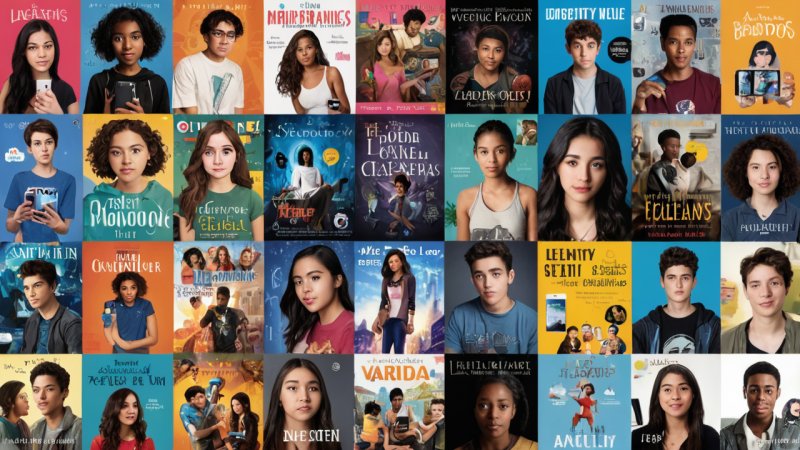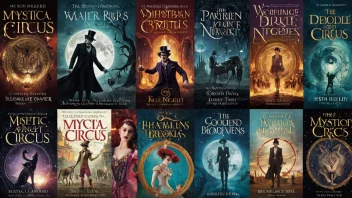In an era where technology and social media dominate young people's lives, the narratives within Young Adult (YA) literature have inevitably evolved to reflect these changes. YA fiction has always been a mirror to the experiences, challenges, and aspirations of adolescents, and the integration of digital communication platforms into storytelling has not only changed the way stories are told but also the themes and issues that resonate with today’s youth. The influence of technology is not merely a backdrop; it shapes characters, drives plots, and creates new genres that address contemporary concerns. As we delve deeper into the impact of technology and social media on YA narratives, we can uncover fascinating insights about how these elements intertwine with identity, relationships, and the quest for self-discovery.
The Evolution of YA Literature
To understand the impact of technology and social media on YA narratives, it's essential to first recognize the evolution of the genre. Traditionally, YA literature focused on coming-of-age themes, often set against the backdrop of high school or family dynamics. However, as the digital landscape has changed, so too have the stories being told. Contemporary YA novels now often include elements such as texting, social media interactions, and online relationships, which are integral to character development and plot progression.
Technology as a Narrative Device
One of the most significant ways technology impacts YA narratives is through its role as a narrative device. Authors are increasingly using platforms like social media to convey characters' thoughts and feelings, allowing for deeper insights into their inner lives. For instance, in novels like Simon vs. the Homo Sapiens Agenda by Becky Albertalli, the use of text messages and emails provides a means for characters to communicate in ways that feel authentic to the digital age. This approach not only enhances realism but also allows for a more nuanced exploration of themes such as friendship, love, and identity.
Social Media and Identity Formation
Social media plays a pivotal role in identity formation among young adults, and this theme is prevalent in many YA novels. Characters often grapple with their online personas versus their real-life identities, leading to complex narratives that explore self-acceptance and authenticity. Books like The Hate U Give by Angie Thomas tackle social justice issues while also delving into how social media amplifies voices and movements, reflecting the power and responsibility that comes with online engagement. Through these narratives, readers are encouraged to consider how technology influences their own identities and the world around them.
The Role of Online Communities
The rise of online communities has also shaped the stories told in YA literature. Many contemporary novels highlight the importance of finding support and belonging in digital spaces. For example, the popular novel Fangirl by Rainbow Rowell showcases a protagonist who finds solace and friendship within online fandoms. This theme resonates with many young readers who seek connection in an increasingly isolating world. The portrayal of online communities in YA literature underscores the evolving nature of friendships and support systems in the digital age.
Addressing Cyberbullying and Mental Health
Another critical aspect of technology's impact on YA narratives is the exploration of cyberbullying and mental health. As young adults navigate the complexities of social media, issues like online harassment and the quest for validation can lead to significant emotional challenges. Novels such as Thirteen Reasons Why by Jay Asher address these themes head-on, using technology as a catalyst for the characters' struggles and ultimate resolutions. By incorporating these pressing topics, authors not only reflect the realities of modern adolescence but also provide a platform for important discussions about mental health and the consequences of online behavior.
The Future of YA Narratives
As technology continues to evolve, so too will the narratives within YA literature. The rise of new platforms, such as TikTok, is already beginning to influence storytelling styles, with many authors experimenting with shorter, more visual forms of narrative. We can expect to see a proliferation of stories that incorporate multimedia elements, such as illustrations, videos, and interactive components, which will further engage young readers and reflect their digital experiences. The future of YA literature is likely to be a dynamic interplay between traditional storytelling and the innovative possibilities of digital media.
Conclusion
The impact of technology and social media on YA narratives is profound and multifaceted. As authors continue to weave these elements into their stories, they not only engage young readers but also provide a lens through which to examine the complexities of modern adolescence. From identity formation to the exploration of online communities and mental health, technology serves as both a mirror and a catalyst in YA literature. As we look ahead, it’s clear that the narratives of tomorrow will continue to evolve, reflecting the ever-changing landscape of youth culture and the digital world.






